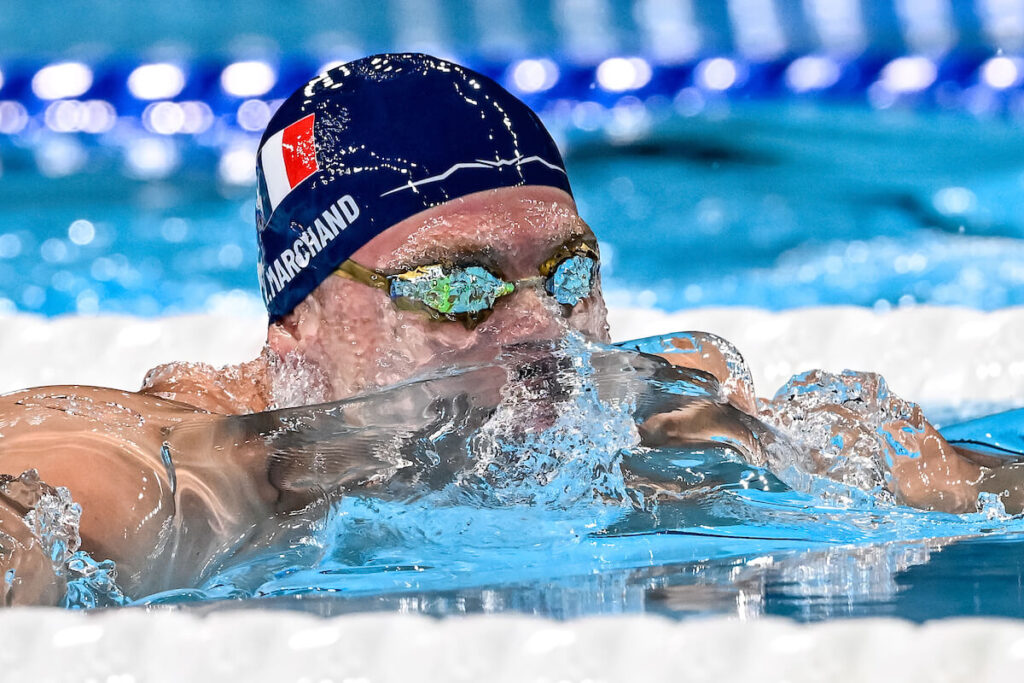Swimming’s World Cup Proving Valuable Hub For Autumn Racing
An event entitled “World Cup” naturally carries some weight. After all, that’s the moniker used by global football’s signature event, held every four years and capturing the attention of fans across the globe. The Olympics is the only global sporting event that prompts similar levels of national pride as the quadrennial FIFA event.
Swimming’s version of the World Cup is definitively not at that level. Although much smaller in scale, the typically-every-other-year World Championships is the signature event hosted by World Aquatics. The World Cup series, on the other hand, is a step along the way toward major competitions, with few swimmers actively targeting wins on the circuit as the ultimate goal. Still, the circuit has value, particularly with the formats the global governing body has employed since the COVID-19 pandemic prompted the cancellation of the 2020 edition.
The past four years of the World Cup have been limited to three or four meets instead of the previous seven-to-nine meet runs that occupied the entire fall. Only a select few athletes would travel around the globe to attend all the meets while most prioritized the stops that were regionally convenient. That left fans watching races with very little depth beyond one or two big names in each field, and swimmers from the home country earned spots in finals almost by default.
The shortened versions of the circuit has earned more buy-in from elite swimmers, who are able to devote a few weeks to the meets rather than needing the entire fall. The meets have been largely grouped together, with the 2023 series confined to Europe (Berlin, Athens and Budapest) while the just-completed 2024 edition landed exclusively in Asia (Shanghai, Incheon and Singapore).
The World Cup gives swimmers well-deserved chances at racking up prize money while also serving a practical utility by providing race practice. Given that 2024 was an Olympic year, the fall 2023 circuit was shifted to long course in recognition of athletes’ ultimate focus on the format used in Olympic competition, and many took advantage.
For Torri Huske, the World Cup provided an opportunity to embrace racing after disappointing performances at the World Championships left her shaken entering the Olympic year. Those meets set her on a track that would culminate with a five-medal performance at the Olympics, including gold in the 100 butterfly.
“The World Cup, Berlin and then Athens, I think that helped me get back into racing mode, and it kind of helped me overcome my fear because I was racing so much,” Huske told Swimming World in September. “And I think exposure is the best way to overcome something.”
Kate Douglass — Photo Courtesy: Andrea Masini / Deepbluemedia / Insidefoto
This year’s circuit returned to short course meters, and it provided a soft landing for swimmers ready to re-enter the pool but delaying a full course of training until the new year. Leon Marchand and Kate Douglass, both individual Olympic champions in Paris, opted for this path, and they ended up winning the overall World Cup titles for men and women, respectively, while getting a fresh perspective on racing.
“I am having a lot of fun so far,” Douglass said after earning her first win of the circuit. “This meet has pretty chill vibes and is pretty low-pressure. I think a lot of people are enjoying that and feeding off of it.”
After completing his last race in Singapore, Marchand stated, “It was awesome. Just travelling around, racing overseas, meeting new people, racing in front of a crazy crowd every time. It’s been really cool.”
Regan Smith of United States of America shows the silver medal after competing in the swimming 200m Butterfly Women Final during the Paris 2024 Olympic Games at La Defense Arena in Paris (France), August 01, 2024. Photo Courtesy: Andrea Masini / Deepbluemedia / Insidefoto
In short course meters, the swimmers could pursue goals totally separate from the long course ones that had defined the high-pressure buildup to the Paris Games. During their World Cup campaigns, Marchand, Douglass, Regan Smith and Noe Ponti all achieved world records that would never have been on their minds a few months earlier. Most swimmers who raced in all three meets improved their times from one week to the next, showing the advantages of continual race practice.
And thanks to their time on the World Cup circuit, all of these swimmers will be better positioned for the Short Course World Championships coming up in Budapest in December. Marchand has already downed Ryan Lochte’s world record in the 200 IM, and he has inched closer to the marks over 100 and 400 meters as well. Smith could take the backstroke records down even further, perhaps even sub-54 in the 100 back and sub-1:58 over 200 meters.
Perhaps further records will be in danger next month thanks to the practice swimmers received on the World Cup circuit. For one, Duncan Scott became only the fifth man to break 1:40 in the 200 free at the final stop in Singapore, his time of 1:39.83 edging closer to Paul Biedermann’s suit-aided world record of 1:39.37. Perhaps he learned some lessons racing the event six times in three weeks that can prove valuable as he pursues the record with full rest and preparation, although it’s not known if Scott will swim at Worlds.
Sure, the World Cup is hardly a prestigious event but a valuable and low-pressure outlet for swimmers seeking racing and chances to earn money at an otherwise-quiet point in the calendar. Credit to the elite swimmers who took advantage and who will see that practice pay off with short course world titles.

